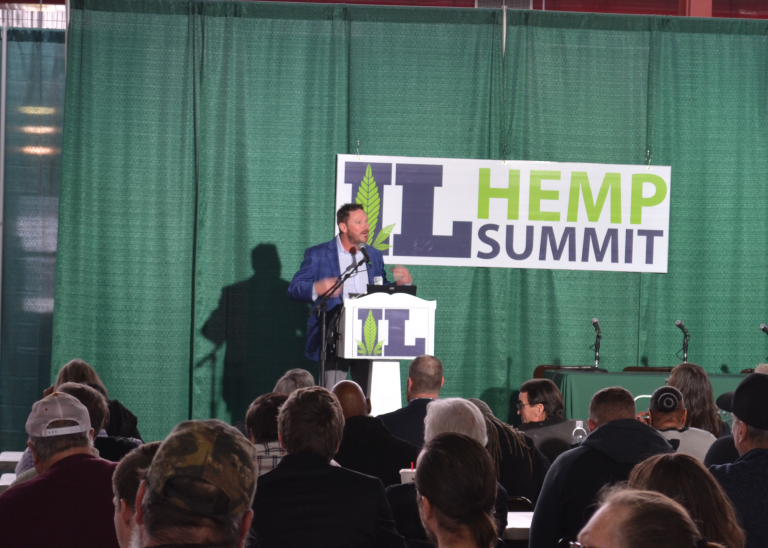Hundreds of farmers, processors, and researchers gathered at the Illinois state fairgrounds on Tuesday to talk about hemp.
It’s been over a year since former Illinois Governor Bruce Rauner legalized growing hemp in the state.
One year later… growers, processors, and government officials have learned a lot. The purpose of the summit in Springfield was to spread that knowledge around.
The event was sold out, with almost 700 registrations.
Jarod Peyton grows hemp in Wayne City, Illinois.
“You know, I was assuming there’d be a couple hundred people here,” said Peyton. “I never realized or even imagined it’d be this big, so this is great.”
Peyton says hemp is stigmatized where he lives, so he was shocked at the turnout. Hemp is related to marijuana, but has less Tetrahydrocannabinol – or THC – which gives marijuana its psychoactive effect.
The U.S. is the biggest hemp-importing country, and even before the cannabis plant was fully legalized federally, some states ran pilot programs under the 2014 farm bill. In October, the U.S. government finalized an interim national regulatory framework that is expected to pave the way for the crop’s widespread commercialization starting as early as 2020.
Producing hemp, especially for CBD extraction, is labor-intensive. Obtaining high-quality seeds can be difficult and expensive. Weed control is an issue; little is known about safely or legally using pesticides. Before a crop is harvested, it’s tested for THC, the chemical in cannabis that causes a high. If the level is “hot,” above 0.3%, the plants must be destroyed.
Vote Hemp says more than 30 states issued 17,800 licenses to farmers and researchers in the wake of hemp’s legalization, more than quintuple the 2018 figure. Of the half a million acres (202,350 hectares) covered, though, an estimated 295,000 (119,000 hectares) weren’t planted because of limited access to seedlings and clones, a lack of financing and a “huge number” of inexperienced growers, according to the nonprofit advocacy group. It estimates that about 50% to 60% of the planted acres, or 120,000 (48,560 hectares) to 144,000 (58,280 hectares), will be harvested, once crop failures, non-compliant plants and other factors are factored in.
The U.S. Department of Agriculture’s newly issued interim rules to facilitate hemp production will provide much-needed guidance on testing, background checks and other issues.
The industry also is closely tracking the U.S. Food and Drug Administration. Though products containing CBD are already in stores and sold online, the agency says CBD-infused foods, drinks and dietary supplements are illegal. It’s exploring ways that the compound might officially be allowed.

